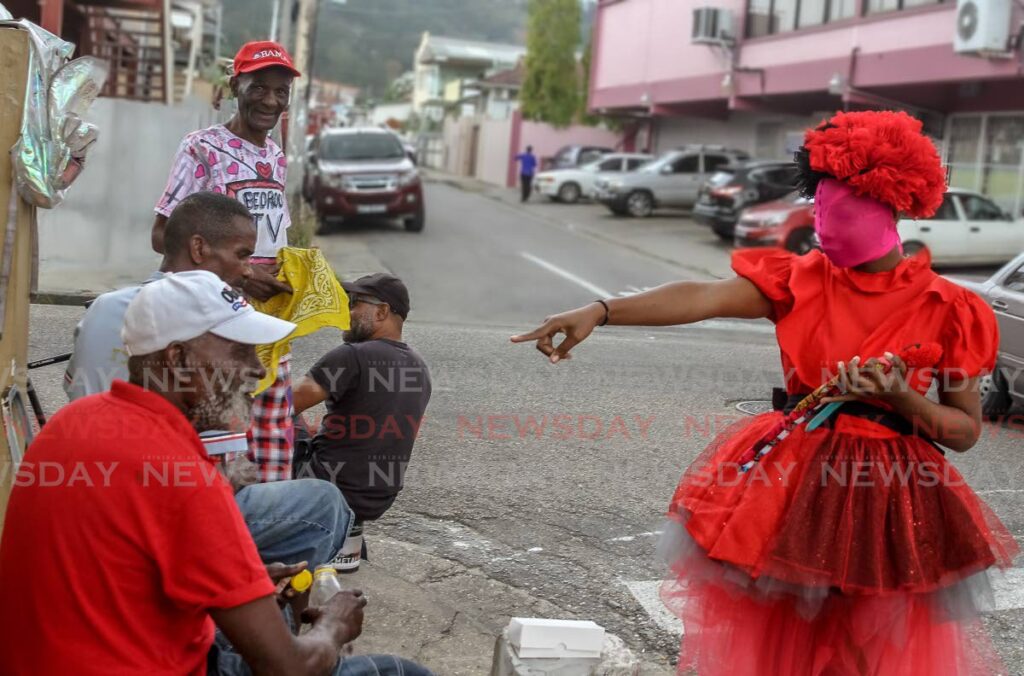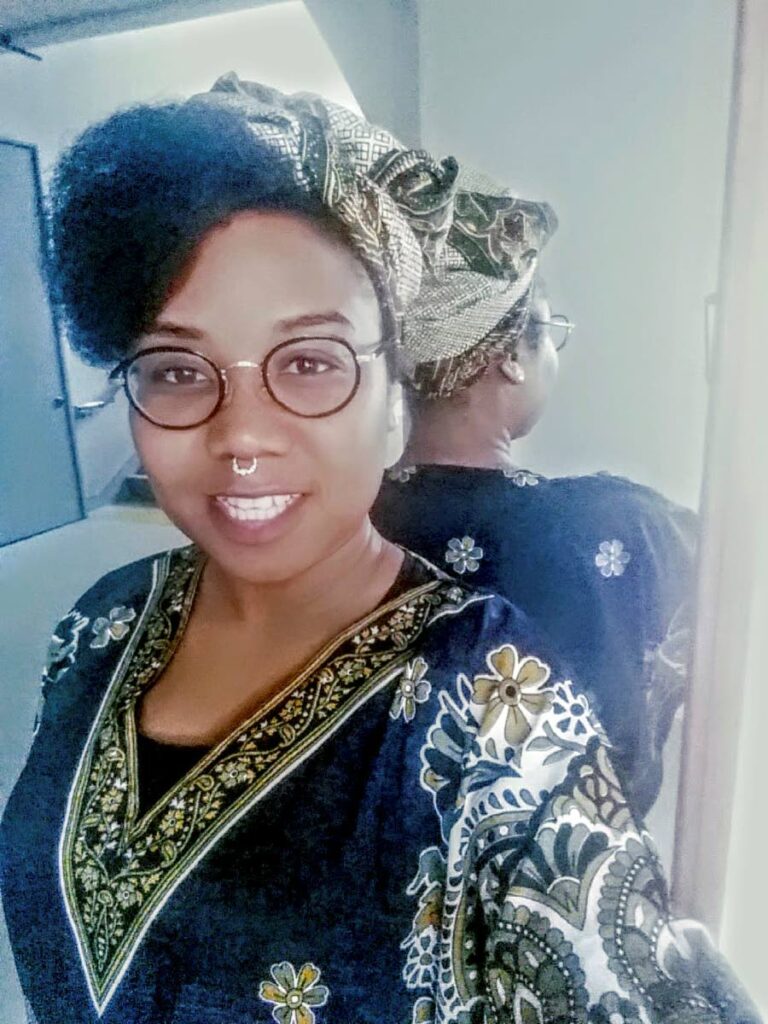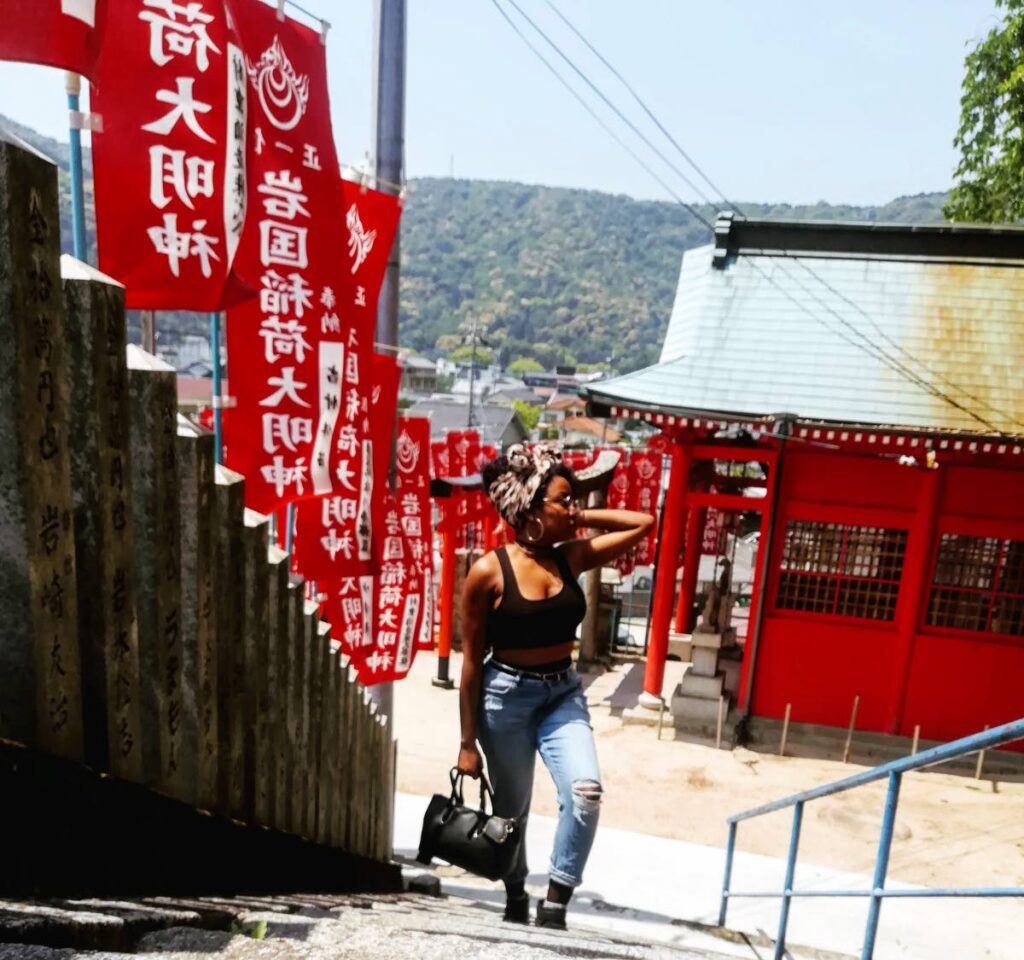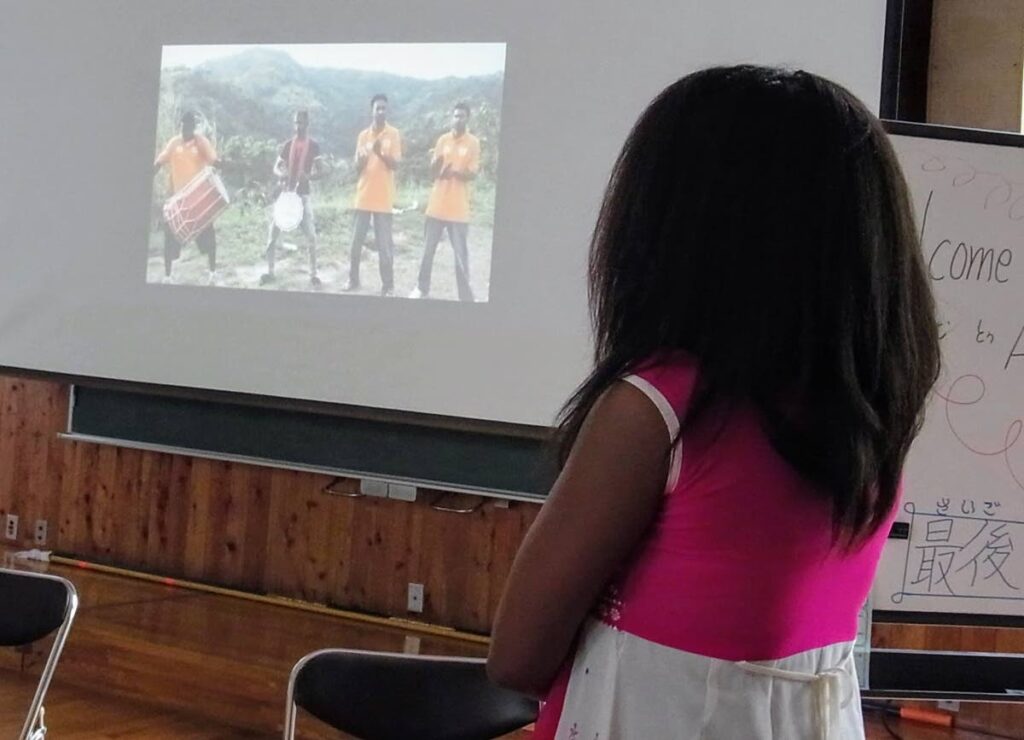Avah Atherton's art rebellion: Smithsonian intern chronicles traditions of TT Carnival

After spending three years in Japan teaching English as a second language, cultural activist Avah Atherton left there very impressed with that country’s cultural preservation initiatives – the catalyst for a cultural heritage initiative of her own.
Atherton is a virtual intern at the Smithsonian Institution's Centre for Folklife and Cultural Heritage, a research and educational unit of the Smithsonian Institution in Washington DC, where she has published the first of a series of articles on different aspects of TT’s traditional Carnival.
The series is entitled The Art of Rebellion and her first article, The Baby Doll Masquerade in TT’s Carnival, was published last month. The article looks at the ways in which enslaved Africans paid homage to their culture while defying the colonial authorities during the 400 years of slavery in the Caribbean.
“The Smithsonian Institution is the largest museum in the world,” Atherton told WMN.
“It’s actually more accurate to describe it as an educational complex as it’s made up of approximately 17 museums, along with galleries and zoos. The Centre for Folklife and Cultural Heritage promotes cultural heritage in the US and around the world. I left Japan very impressed with their cultural preservation initiatives and wanted to work in the field although my background is in languages.”

She said when the Smithsonian opened the call for interns, she sent a message asking if it would accept non-US residents and, because the internships were being conducted virtually due to covid19, she was accepted and started in May.
Atherton has an associate’s degree in journalism and public relations from Costaatt as well as a BA in linguistics from UWI, St Augustine. She recently graduated from UWI with a postgraduate diploma in arts and cultural enterprise management.
“I’m trying to change my career trajectory so that I can combine my linguistic background with cultural preservation.”
She said her time in Japan – 2015 to 2018 – in the Japan Exchange and Teaching (JET) programme, was very instrumental in her cultural growth and maturity.
“There was something about Japan that felt very strange to me but I couldn’t identify it. Beyond the expected new-ness of the country and their quirks I mean. There was like an unseen social pressure that made its citizens consider others above themselves.”
She said it took some time before she was able to recognise how this way of life directed the actions of the people of Japan and resulted in a society that is high-functioning with virtually no crime and unemployment, effective public services and world-renown hospitality.

“And one that revered their history and cultural traditions too. I wondered what made us different from them, what it would take for our society to be peaceful and progressive.”
But, she said, she didn’t ignore the fact that Japan and TT had drastically different historical backgrounds.
“Our history is a depressing combination of human rights violations, genocide, violence, and exploitation. Decimated First Peoples, enslaved and degraded Africans, abused indentured labourers, bullied migrants...we didn’t have the luxury of thinking about a future for ourselves. Far less for shaping one that we could all be proud of. One thing we all had in common in that terrible traumatic history is our rebellion against those cruelties. The Art of Rebellion is really more about resilience. Our individual, collective, and very human ability to survive.”
Atherton, 32, was born and raised in Arima and is not an active Carnival participant because of her somewhat religious childhood, which she said prevented her from enjoying anything more than the occasional school “jump-up.”
“And when I was old enough to decide for myself, I worked either with my mother selling food or for companies promoting food or alcohol at fetes and events.”
It was her curiosity about the traditional characters and their origins that led her to do deeper research and sparked an interest in writing about them.
“The usual places would provide just a few lines of explanation that hinted at deeper political and social implications. The baby doll felt like the most misunderstood masquerade and, as a feminist, I wanted to address those misconceptions.”

The baby doll, portrayed by a woman dressed in a frilled dress and bonnet with a doll in her arms, is seen at ole mas competitions. The doll symbolises an illegitimate baby and the character accuses male passers-by of being the baby's father and she demands money from them to buy milk for the baby. It reflects the history of families led by single mothers.
Atherton said she has had to use various online sources because of the limited access to physical documents caused by the pandemic.
“I’m really grateful to the Carnival Institute for sending me the research materials in their possession. Access to online academic journals using my UWI credentials was also very helpful. I wanted to write a story that was backed by historical fact, because I know that I can't change or even influence popular opinion without solid evidence.”
Her other pieces in the series will most likely include the tamboo bamboo, J’Ouvert, jab jabs, and calinda, depending on the willingness of the relevant interview subjects and the availability of research material.
Baby Doll Masquerade is not Atherton’s first published piece, having had her work published locally as well as in Japan.
“As an editor and contributing writer for the Shizuoka Chronicle (an English quarterly newsletter), I wrote about travel and life in Japan. For AJET Connect magazine (an English publication in Japan), I wrote about my experience at a festival in a city called Gujo-Hachiman where I won an award. For the AJET blog, my piece was something of a farewell to Japan and the life that I had there.”
While her writing is currently on a freelance basis and she works full time as a social media manager, her plan is to switch things up a bit.
“I’m hoping to be a full-time cultural writer in the near future,” she said with a focus on oral histories, folklore, and festival traditions.


Comments
"Avah Atherton’s art rebellion: Smithsonian intern chronicles traditions of TT Carnival"